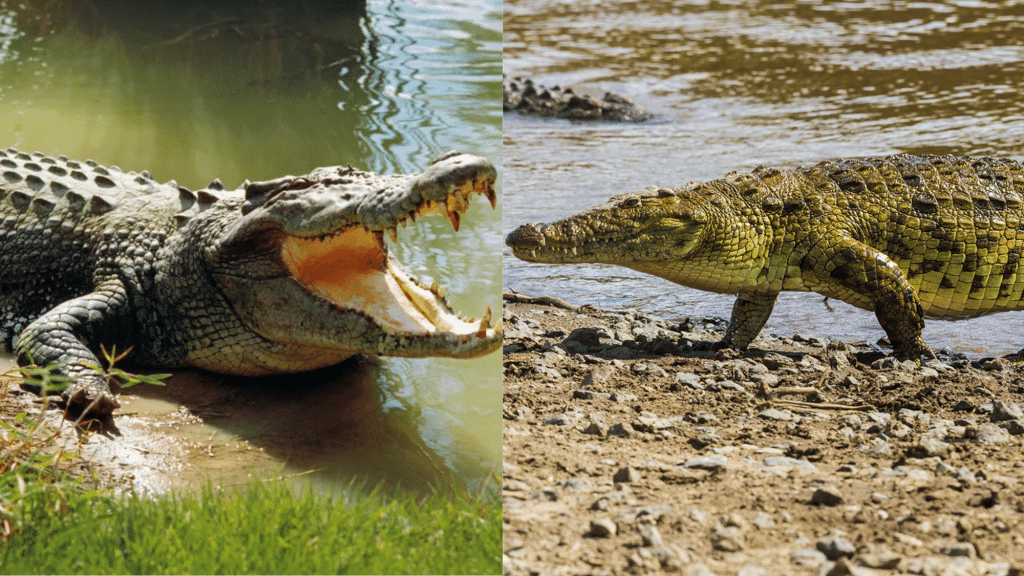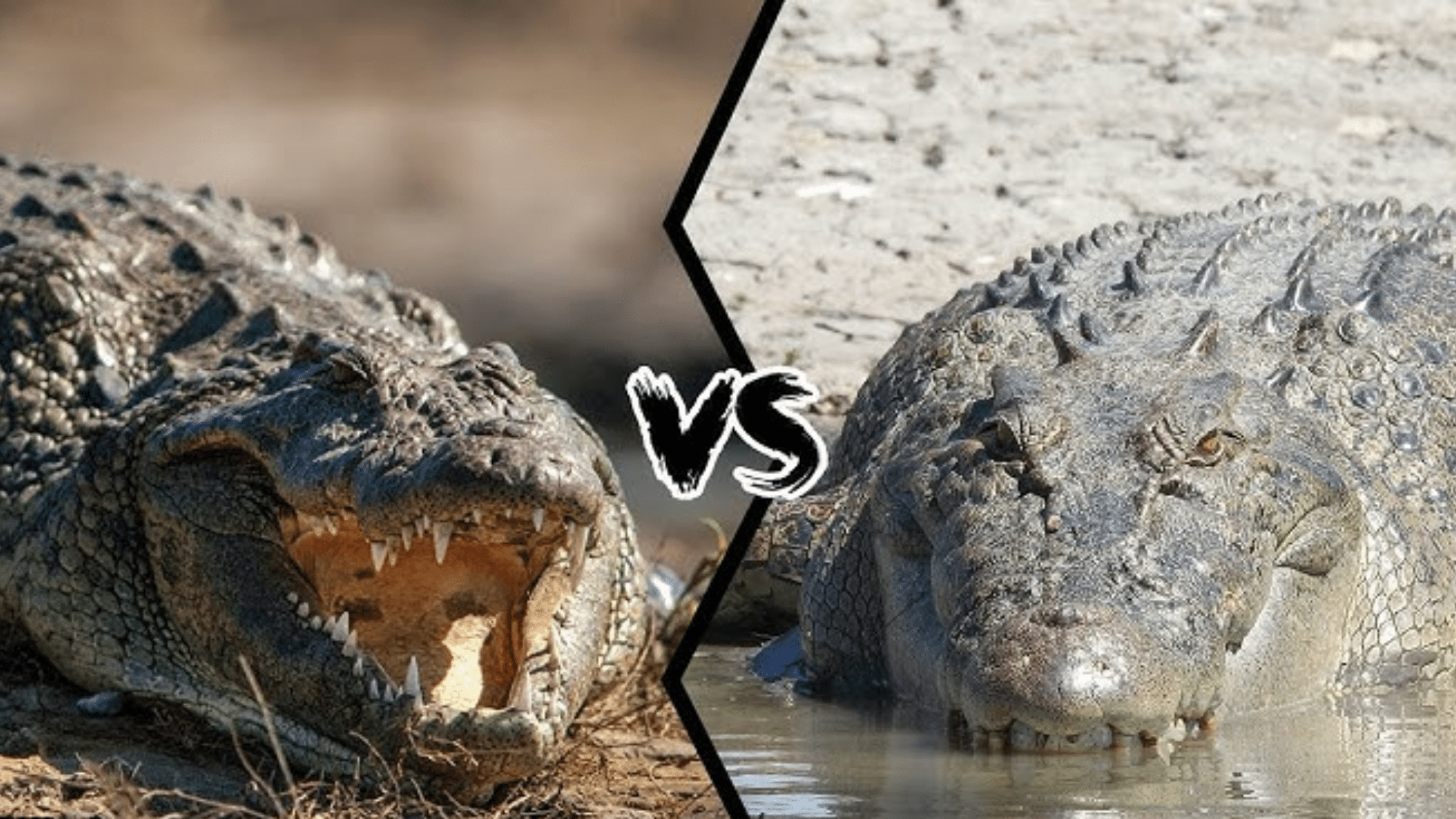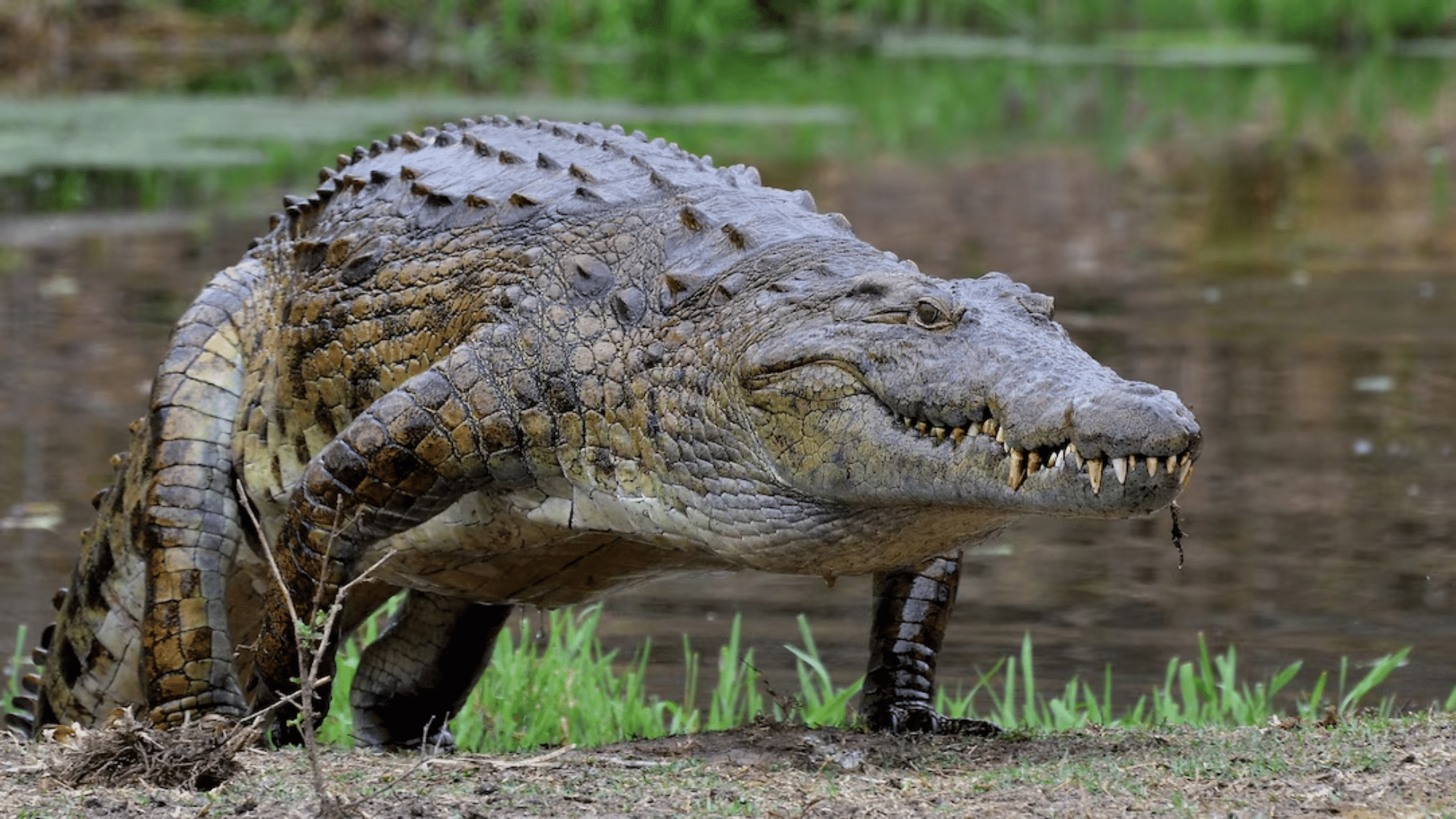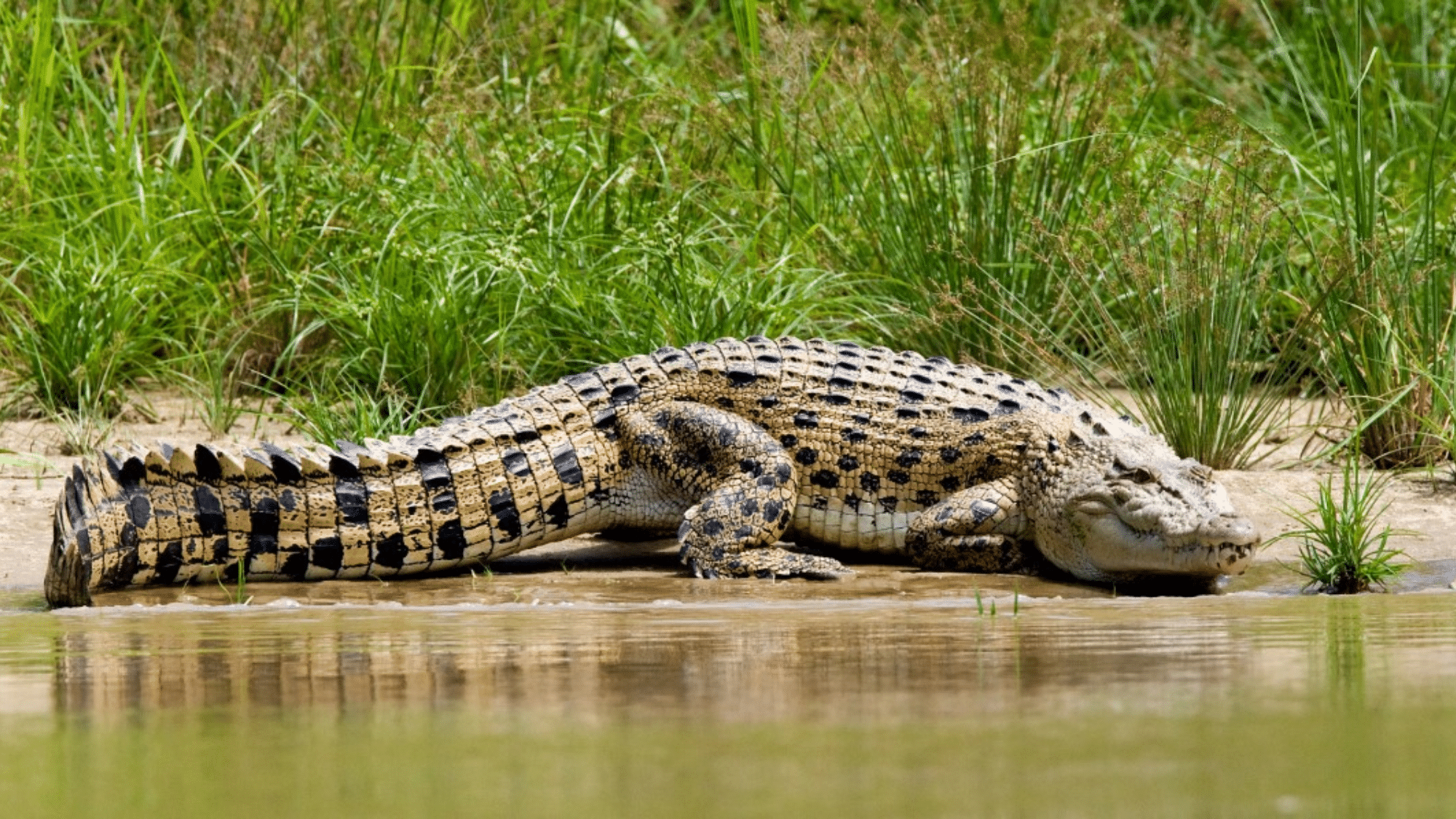When it comes to crocodiles, two species often stand out: the Nile Crocodile and the Saltwater Crocodile.
No doubt, both are powerful predators, but they differ in many ways, from their size and habitat to their behavior and interactions with humans.
The Nile crocodile is a skilled African hunter, while the saltwater crocodile is the world’s largest reptile.
So, in this blog, let’s take a look at their key differences, examine their aggression, and share some interesting facts about these top predators in detail.
Key Differences Between Nile & Saltwater Crocodiles
| Feature | Nile Crocodile | Saltwater Crocodile |
|---|---|---|
| Habitat | Freshwater (rivers, lakes) | Coastal, brackish, and saltwater |
| Aggression | Highly aggressive in freshwater | Aggressive in both freshwater and saltwater |
| Range | Found in Africa | Found in Southeast Asia, Australia, and the Indo-Pacific region |
1. Physical Appearance
Size Comparison
Nile crocodiles typically grow up to 16 feet and weigh 500-600 kg, whereas saltwater crocodiles can grow up to 23 feet and weigh over 2,000 kg, making them the largest crocodile species.
Key Features
- Nile Crocodile: Typically darker, with a more rugged texture and sharper snout.
- Saltwater Crocodile: Lighter, with a broader head and powerful jaws suited for hunting large prey.
Size Impact
The saltwater crocodile’s larger size allows it to hunt and dominate in a wider range of environments, including coastal areas and even the open ocean.
The smaller Nile crocodile is highly efficient at hunting in freshwater and can be more agile in these environments.
2. Habitat and Range
Nile Crocodile Habitat: Found in Africa, Nile crocodiles inhabit freshwater environments, including rivers, lakes, and marshes. They prefer warm climates but are often found in more inland areas.
Saltwater Crocodile Habitat: These crocodiles are found in coastal areas, estuaries, and river mouths throughout Southeast Asia, northern Australia, and the Indo-Pacific. They are also the only crocodile species capable of living in the open sea.
Overlapping Areas: Though these two species generally occupy different habitats, there are instances where saltwater crocodiles venture into freshwater areas, overlapping with Nile crocodile territories, especially near coastal river systems.
3. Behavioral Differences
| Behavior | Nile Crocodile | Saltwater Crocodile |
|---|---|---|
| Hunting Habits | Ambush predator uses stealth in freshwater to catch prey | Active hunter, patrols coastal areas, pursues prey over long distances in saltwater |
| Territorial Behavior | Territorial, but more restricted to freshwater areas | Territorial, broader range due to the ability to live in both freshwater and saltwater |
| Social Behavior | Solitary, except during mating seasons | Solitary, may share overlapping territories in coastal areas |
4. Venom and Bite Force
- Bite Force: The saltwater crocodile has the strongest bite force of any animal, with a bite force of over 3,700 PSI, while the Nile crocodile has a bite force of 3,000 PSI.
- Venom: Venom is not needed for these crocodiles, as their powerful jaws and strength are sufficient to overpower and subdue their prey.
Nile vs Saltwater Crocodile:Who Would Win
Both species are apex predators, but the saltwater crocodile has the edge with its larger size (up to 23 feet) and bite force of 3,700 PSI.
Its ability to survive in both freshwater and saltwater habitats gives it a wider range.
In contrast, the Nile crocodile, though slightly smaller and more limited to freshwater habitats, remains a fierce predator.
Its surprising tactics and powerful bite make it deadly, but in a direct confrontation, the saltwater crocodile’s size and strength likely give it the edge.
Interesting Facts About Crocodiles
Here are some interesting facts about each species that makes them more fun.
Nile Crocodile Facts
- Nile crocodiles can live up to 70-100 years in the wild.
- Known for their ability to perform a “death roll” to disable prey.
- Nile crocodiles can hold their breath underwater for up to 30 minutes.
- Their aggressive nature makes them one of the most dangerous animals in Africa.
Saltwater Crocodile Facts
- Saltwater crocodiles are capable of swimming in both freshwater and saltwater, even in the open ocean.
- Known to travel long distances, sometimes over 1,000 miles, in search of territory.
- Their bite force is the strongest in the animal kingdom.
- Saltwater crocodiles can survive in a wide range of habitats, including mangroves and coastal areas.
After comparing these predators, it’s clear that both influence supreme in their domains. The saltwater crocodile is the largest and most adaptable across multiple habitats, while the Nile crocodile’s cooperative hunting and historical impact remain unmatched. Each one is strong in its own way. However, knowing their differences helps us stay safe and respect these animals.























